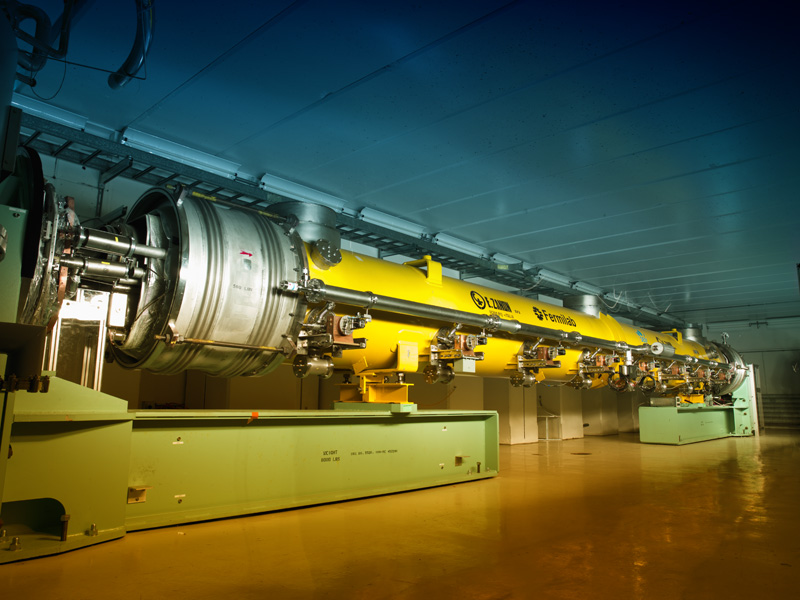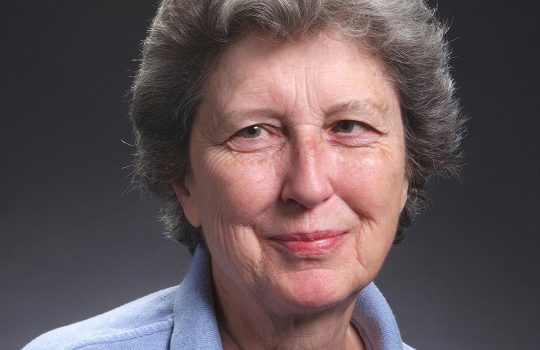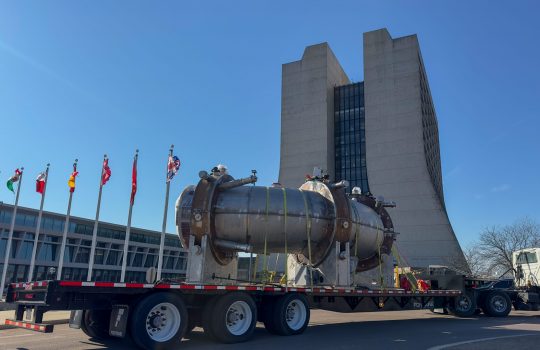In 2001, the University of Chicago — one of the managing institutions for the U.S. Department of Energy’s Fermi National Accelerator Laboratory — created the France Chicago Center, an interdisciplinary organization with the goal of facilitating and promoting fruitful intellectual and artistic exchange between students and researchers in Chicago and their colleagues in France.
Although the organization was concentrated in the humanities and social sciences at first, in 2008, they began contacting various partners both within and outside the university, including Fermilab, to gather funds that could be made available to teams of scientists from Chicago and France, enabling them to conduct research together. This is how the France And Chicago Collaborating in The Sciences program, or FACCTS, was born.
The program has been particularly successful at Fermilab, where FACCTS has now supported four collaborations with a total of almost $60,000. Through these collaborations, funded by Fermi Research Alliance LLC, researchers develop technologies that will allow us to do things like detect dwarf galaxies with unprecedented sensitivity and better investigate neutrino oscillations, which could revolutionize our understanding of the universe.
“We believe that both the university and France are enriched and made more lively because there’s dynamic exchange between scholars, professors and students,” said Daniel Bertsche, the associate director of the center. “We put a lot of effort into getting people and ideas back and forth across the Atlantic.”
Each year, researchers at Fermilab, the University of Chicago and Argonne National Laboratory can apply for FACCTS awards, which provide seed funding for new project-based collaborations between researchers in Chicago and France. Because of the way the financial structures of the university and national labs are arranged, FACCTS hosts three different pools of applicants for each institution.
For the Fermilab pool, FACCTS invites any researcher from the lab to submit an application directly to them.
In the seven years since it was created, the total amount of money available for these awards has risen from $100,000 to $260,000. Individual awards, available for one or two years, range between $5,000 and $25,000.
“The idea is that there’s really good science happening both in the United States and in France,” Bertsche said, “and often there’s a lot to be gained by collaborative research. But there are a lot of barriers to trans-Atlantic collaborative research because of the way science is funded in both countries. There are restrictions to the funds that make it difficult for researchers to use them for things like trans-Atlantic airfare or housing while they run experiments. We realize we don’t have large sums of money that we’re offering, but we try to augment the usefulness of our funds by really minimizing the number of strings attached.”
In 2018, Fermilab scientist Dan Broemmelsiek, whose research focus is on superconducting accelerators, was given a FACCTS award to seed work on novel instrumentation for superconducting accelerating structures. The idea is to use noninvasive techniques to understand electron beam parameters in superconducting radio-frequency accelerating cavities.
A Fermilab guest scientist from the French institution CEA Saclay, Olivier Napoly originally saw an opportunity at Fermilab’s electron linear accelerator to test some of his ideas.
“Olivier is one of the world’s experts on superconducting radio-frequency cavities,” Broemmelsiek said. “The Fermilab Accelerator Science and Technology facility is a research and development facility, largely unencumbered by experimental priorities the way the other accelerators at Fermilab are. Prototype development and beam-based feasibility studies are what we do. Olivier’s ideas could have extensive impact on the performance of current and near future accelerators.”

Fermilab’s most recent recipient of a FACCTS Award is Dan Broemmelsiek, who is working to advance instrumentation on superconducting accelerators. Pictured here is a cryomodule for a superconducting electron accelerator. Cryomodules are major units of a superconducting accelerators and are typically lined up end to end to form the machine. Photo: Reidar Hahn
In 2015, former Fermilab scientist Giulia Brunetti, who is now based in Italy, was awarded a FACCTS grant for a project on liquid-argon detectors, in particular on what is called dual-phase technology. This technology may have implications for the upcoming Fermilab-hosted Deep Underground Neutrino Experiment, a large, international experiment to investigate neutrino oscillations and answer fundamental questions about the nature of matter and the evolution of the universe.
Although scientists had investigated the dual-phase technology in the past, it had not been tested at the scale needed for such an experiment. Brunetti was able to fund trips to Europe where she could work on larger-scale detectors — an important part of her research that would not have been possible without the award.
“It was a great opportunity for me to gain some expertise on liquid-argon detectors,” Brunetti said. “I was able to be at CERN for part of the time, and I worked with a collaboration on the assembly of the detector. That experience is fundamental to understand all the details of the detectors and how carefully they need to be built and operated.”
In 2017, Fermilab scientist Alex Drlica-Wagner, whose interests focus on the fundamental nature of dark matter, was given a FACCTS award to support ongoing work to simulate and test the sensitivity of the upcoming Large Synoptic Survey Telescope to detecting dwarf galaxies. The work is conducted in collaboration with Johann Cohen-Tanugi and Eric Nuss and University of Montpellier and Laboratoire Univers et Particules de Montpellier.
Drlica-Wagner also works on the Fermilab-based Dark Energy Survey, or DES.
“These funds have enabled two workshops over the past year — one in Montpellier and one in Chicago,” Drlica-Wagner said. “The meetings have been invaluable for establishing the project, defining its scope and introducing new collaborators. Fermilab has an enormous amount of experience with DES data collection and reduction, while our French collaborators have a lot of experience on the LSST simulation toolkit and simulated data analysis. Bringing the two areas of expertise together has been enormously productive for both parties.”
FACCTS is a valuable tool for scientists who want to conduct trans-Atlantic collaborative research, but for whom the logistical barriers are just too high, Bertsche said.
“We’re a program that can provide a small amount of funding that can remove those barriers, allow for the initial stages of research to unfold between complementary labs and provide needed resources that can allow these labs to generate preliminary data that can then in turn be used for much larger grants,” Bertsche said. “Not all seeds germinate and grow into oak trees, but the ones that do are pretty impressive.”



